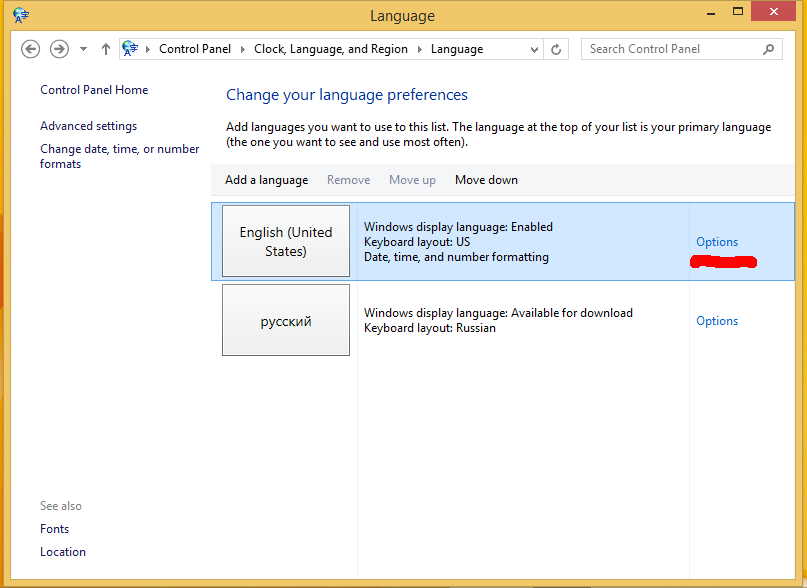How To Install Cab File Windows Server 2008 R2
HelloI'm trying to install an 'English (US)' language pack on my Windows Server 2008 R2. I already have the 'English (English)' but need to install the 'English (US)' because of a problem with the SQL Server 2008 R2 Setup.Anyway.
I downloaded the language packs (6001.18-1840amd64freServerLP1-KRMSLPX1DVD.img and Windows6.1-KB974587-x64-en-us) but when I go 'Control Panel - Clock Language Region - Install or uninstall display language' and I browse andpoint to my downloaded language packs (uncompressed), I always get 'no valid language packs found'Any ideas?Thanks in advanceAlex. How to install a language pack on Windows Server 2008 (R2).20 November 2009 byThe language packs provide an alternative user interface for the users. I mostly use the language packs when I’m deploying Windows Remote Desktop Services. Here is a short “how to” to install a language pack on Windows Server 2008(R2). First, download the language pack from Microsoft. You can find it at the Download Center.
Windows Server 2008 R2 Requirements

I’ve downloaded the entire Multilingual User Interface (MUI) ISO and burned it to a DVD disk. If you are installing the MUI on a RDS Session Host, don’t for get to put the server in the install mode by typingC:change user /installat the command prompt. With the command prompt still open, start C:lpksetup.exe. The Install or uninstall display languages wizard will appear. Click on Install display languages. Next, click on the Browsebutton and select the lp.cab file. Click on Nextwhen the lp.cab file is loaded.
Accept the license terms and click Next. The selected language pack is being installed. Click on Finishand then select the new language to display. Check the “ Apply display language to welcome screen and system accounts” check box and click on Change display languagebutton. Restart Windows for the system language change to take effect and you’re done.Note: You do not have to change the mode of the RDS Session Host back to execute.
After reboot the default mode will be the execute mode.Tested on Windows Server 2008 R2 Build 7600Cheers!- Marek.Zblog work. By the way, based my experience, you don’t need change any language settings if you want to install SQL Server 2008 R2 on the computer.That is a good one.You should talk to those german speaking people who do NOT live in Germany (and I know at least 4different countries) and have a language setting which is not 'German (Germany)' in their windows environment.SQL Server setup fails with the message 'Language is not supported'. It does not matter if you are trying to install the german or english version.The only way for us is to change the regional settings to 'German (Germany)', install the SQL Server (or SP) and change the regional settings back after the install ran. HelloI'm trying to install an 'English (US)' language pack on myWindows Server 2008 R2. I already have the 'English (English)' but need to install the 'English (US)' because of a problem with the SQL Server 2008 R2 Setup.Anyway. I downloaded the language packs ( 6001.18-1840amd64freServerLP1-KRMSLPX1DVD.imgand Windows6.1-KB974587-x64-en-us) but when I go.The first reason: You've downloaded a wrong Language Pack: 6.001.18000 is forServer 2008 and not 2008 R2 and the second reason: Windows6.1-KB974587-x64-en-us is the right package, but you have to extract ' exe'-file, so you have to double-click on this file and you'll get the lp.cab.
Prior to Windows 2008 and Vista software updates delivered through SMS/SCCM would come down in the form of.exe files and be stored in the client cache. During patch troubleshooting one option might be to attempt to run the patch directly, from the cache.With Windows 2008 and Vista updates now come down as.cab files and if you double click them to attempt a manual install you will end up just opening the cab to display the packaged content. And, none of the files in the packaged content have an extension that appears to be actionable.If you download updates for Windows 2008 and Vista manually - outside of SCCM - they will come down in the form of a.msu file. This.msu file is really just a wrapper around the packaged cab file that is downloaded through SCCM and is the standard update file for Windows 2008. Take a look at for detail on how the msu works.Whether you choose to use the.msu file or to install the.cab that is downloaded by SCCM manually the process that handles the update install in Windows 2008/Vista is pkgmgr.
With the.msu you can just double click and the install happens as you would expect. If you want to manually install the SCCM downloaded cab file you will have to execute a command line. When you run the command line the files within the cab will be extracted to the path specified for the cab so be sure you are OK having the files extracted there - in my testing, the files remained after being extracted.

A sample command line is below. In my testing the comand line required the quotation marks as shown. Others have seen patches where the quotation marks caused errors - one of the two methods should work for you.Start /w pkgmgr /ip /m:”c:tempWindows6.0-KB958687-x64.cab”Of course, installing patches manually is not optimum - our goal should be a patching cycle that just runs without all of the work to fix the one off failures. But, if needed, the above will work.